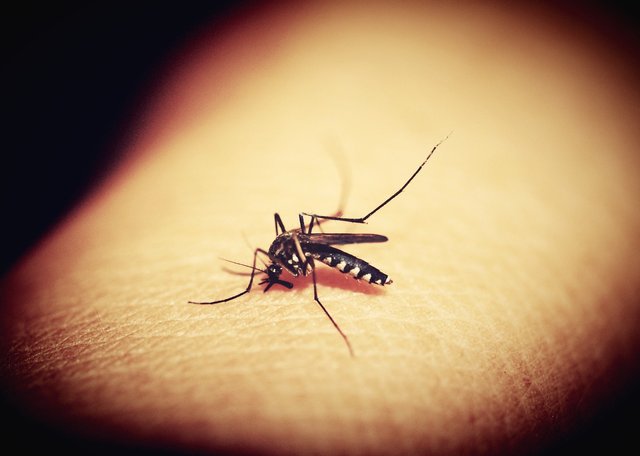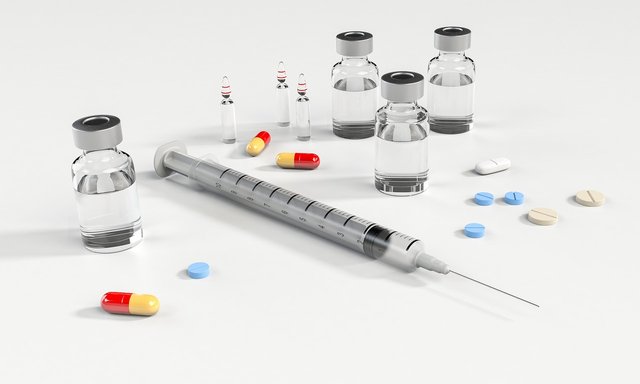MALARIA AS A MENACE AND POSSIBLE CURBING SOLUTIONS
Malaria is the world’s most devastating human parasitic infection. Malaria afflicts about 500 million people and causes 2million deaths per annum. Most susceptible are children younger than five years, pregnant women and non- immune individuals. More than 90% at these deaths occur in sub-Saharan Africa. With an estimated 100 million cases and 100,000 deaths each year, Nigeria is the country with the highest number of malaria casualties worldwide. In Nigeria as at April, 2015, malaria was responsible for 60% of out-patient visits to health facilities, 30% of childhood deaths, 25% of deaths in children under one year and 11% of all maternal deaths. It is estimated that the disease kills an African child every 30 seconds. Other high – risk groups include refugees, visitors and laborers from non-endemic regions. Malaria imposes a huge economic burden on countries where the disease is rife.
PATHOPHYSIOLOGY
Malaria is caused by parasites belonging to the genus Plasmodium. Four main species of plasmodia infect humans: P. vivax, P. falciparum, P. ovale and P. malariae. The insect vector is the female Anopheles mosquito, which breeds in stagnant water, and is easily spread in hot, humid environments. The symptoms of malaria include fever, shivering, pain in the joints, headache, repeated vomiting, generalized convulsions, coma and death. Symptoms become apparent only 7-9 days after being bitten by an infected mosquito.
LIFE CYCLE OF MALARIA PARASITE
The mosquito, not the human, is the definitive host for plasmodia, and it has been said that the only function of humans is to enable the parasite to infect more mosquitoes so that further sexual recombination can occur. The life cycle of the parasites consists of a sexual cycle, which takes place in the female anopheles mosquito and an asexual cycle, which occurs in humans. Sporozoites from the mosquito salivary glands rapidly enter the circulation after a bite and localize via specific recognition events in hepatocytes, where they transform, multiply and develop into tissue schizonts. This primary asymptomatic tissue or exoerythrocytic stage lasts for 5-15 days depending on the plasmodium species. Tissue schizonts then rupture each releasing thousands of merozoites that enter the circulation, invade the erythrocytes and initiate the erthrocytic cycle. Once the tissue schizonts burst in P. falciparum and P. malariae infections, no forms of the parasites remain in the liver. However, in the P. vivax and P. ovale infections, tissue parasites called hypnozoites persist that can produce relapses of erythrocytic infections, months to years after the primary attack. In erythrocytes, most parasites undergo asexual development from young ring forms to trophozoites and finally rupture, each releasing 6-32 merozoites depending on the plasmodium species. It is this process that produces febrile clinical attacks. The merozoites, invade more erythrocytes to continue the cycle, which proceeds until the death of the host or modulation by drugs or acquired partial immunity.
TESTING
Rapid diagnostic tests with kits that are small, non-cumbersome and simple enough for all medical personnel to operate are now available. This has had a huge effect on treatment and mortality.
PREVENTION
Methods used to prevent malaria include medications like the IPT given pregnant women during ante-natal visits. This Intermittent Preventive Therapy often consists of a combination of Sulfadoxine and Pyrimethamine. Other preventive methods include vector control efforts such as Indoor Residual Spraying (IRS), decreasing the availability of stagnant bodies of open water and health education. The use of insect repellents containing picardin or DEET (N.N-Diethyl- ether toluamide) is on the rise now as infections from other species gain traction. (e.g Zika virus disease from Aedes egyti mosquito). Sleeping under LLIN (Long-lasting Insecticide treated Nets) is a very effective way of preventing malaria. RTSS is a vaccine that has been developed by GlazoSmithKline Biologicals, Malaria Vaccine Initiative (MVI), Bill & Melinda Gates foundation and a network of African research centers. It is the first malaria vaccine to have completed pivotal phase 3 trial and obtained a positive scientific opinion by the EMA (European Medicines Agency), RTS’S or Mosquirix® was shown to offer the best protection among children aged 5-17 months who received three dozes of the vaccine a month apart, plus a booster dose at 20 months. The development of genetically modified mosquitoes is another new frontier in the war against malaria. Researchers in the US say they have bred a mosquito that can resist malaria infection and pass on the resistant gene to its offspring. Oxitec, a scientific firm in the UK have developed a bread of mosquitoes that serially reproduces only males. This they hope to release into the wild by spring 2016 and thereby reduce the mosquito population.
TREATMENT
Malaria treatment has evolved over the last fifty years mainly due to the problem of drug resistance which has led to the abandonment of Chloroquine, monotheraphy and early drug combinations like chloroquine + proguanil S+P, Pyrimethamine + Dapsone etc. Antimalarials are mostly classified today in terms of the action against the different stages of the life cycle of the parasite.
MODERN CLASSIFICATION
- Drugs used to treat the acute attack: Blood schizonticidal agents are used to treat the acute attack but also produce a suppressive or clinical” cure. They act on the erythrocytic forms of the plasmodium. In the case of P. falciparum and P. malariae who have no exoerythrocytic stage, these drugs affect a cure. However, with and P. ovale and P. vivax, they only suppress symptoms before recrudescence occurs. This group of drugs includes:
Quinoline-methanols like Quinine & Mefloquine
4- Aminoquinolines like Chloroquine & Amodiaquine(prevents the haemoglobin digestion) also not used in patients with G6PD
Antifolate drugs like Pyrimethamine & Dapsone also sulphanamides
Atovaquone
The new mepacrine – like drug, pyronaridine. - Drugs that affect a radical cure: Tissues schizonticides are able to eradicate even P. vivax & P. ovale parasite in the liver. Primaquine and tafenoquine, both 8-aminoquinolines are the only drugs known to have such ability. These drugs also destroy gametocytes and so reduce the spread of infection.
- Causal Prophylactics: These drugs block the links between the exoerythrocytic stage and the erythrocytic stage and thus prevent infections from becoming attacks. Drugs in this class include lumefantrine, proguanil, pyrimethamine, mefloquine etc.
4.Drugs used to prevent transmission: These agents can destroy gametocytes, preventing transmission by the mosquito and thus diminish the human reservoir of the disease. E.g. Primaquine, proguanil & pyrimethamine.
OLD CLASSIFICATION
- 4-Aminoquinolines: These were the mainstay of malaria treatent, till drug resistance changed all that. Chloroquine was the singular most significant member of this group. Today, structurally related drugs like Amodiaquine and piperaquine are still in use. 4-Aminoquinolines interfere with heam handling. They prevent the digestion of haemoglobin by the parasite and thus reduce the supply of amino acids necessary for parasite viability; chloroquine also inhibits haem-polymerase – the enzyme that polymerizes toxic free haem to haemozin, rendering it harmless to the parasites.
- 8-Aminoquinolines: These include primaquine, pamaquine and tafenoquine. They eradicate malaria hypnozoites in the liver and so are also used for malaria prophylaxis. 8-aminoquinolines cause potentially fatal haemolysis in patients with GCPD deficiency and so are contra-indicated. Pamaquine is no longer available anywhere, Primaquine is still use while tafenoquine is in phase III trials currently.
- Quinoline – methanols: These include quinine and mefloquine. Quinine has been used for the treatment of fevers since the 16th century when Jesuit Priests brought it home to Europe from South America. Quinine is derived from Cinchona bark and together with mefloquine are both effective against the erythrocytic forms of all four species
- Antifolate drugs: Sulfonamides and sulphones have been found to have antimalarial activity. These sulfonamides are used together with pyrimethamine in malaria prevention. With the addition of Artemisinin, this combination is useful in the cure of malaria too.
- Atovaquone: This is a hydroxynaphthoquinone drug used in prevention. It is also combined with ACTs to treat cases resistant to other drugs. Atovaquone + proguanil is particularly synergistic.
- Lumefantrine: This aryl alcohol drug is related to an older compound, Halofantrine, which is now seldom used. Lumefantrine is useless alone but in combination with artemether, is able to prevent parasite detoxification of haem.
- Artemisinin: This is the compound extracted from the weed Artemisia annua or sweet wormwood. The Chinese crystallized the major antmalaria ingredient “Qinghaosu” now called artemisinin, since 1972. Semisynthetic derivates with improved potency and boavailability have since largely replaced the use of Artemisinin. These include:
Artesunate (water soluble, for oral, rectal, IM IV use)
Artemether (Lipid Soluble for oral, rectal or IM use)
Dihydroartemisinin (Quick acting metabolite)
α,β– artether (Quick acting in cerebral malaria)
Artenilic acid (less neurotoxicity than b & d)
Artermotil (β-artether)
Arterolane (OZ277) is being explored in phase III trial run by Ranbaxy laboratories.
Artemisinin acts by inhibiting Ca+ dependent ATPase in the parasite. An endoperoxide bridge of these drugs is activated in the presence of intracellular iron before it can exert its effects. They have no effects on liver hypnozoites.
The knowlegde of this parasite is limitless but the drugs to attack a specific specie are still gradually unveiling, its imperative to note that this specie of parasites; plasmodium are still a threat to the developing countries and the more we understand that they are micro-killers, the better for the african polulation at large
Thanks for reading
Reference
Malaria vaccines employed to war against its parasite
Stages of malaria and its importance
Malaria biology



Such an interesting write up on malaria. Thanks for the knowledge
Downvoting a post can decrease pending rewards and make it less visible. Common reasons:
Submit
Congratulations @anthonymartin320! You have completed the following achievement on the Steem blockchain and have been rewarded with new badge(s) :
Click here to view your Board of Honor
If you no longer want to receive notifications, reply to this comment with the word
STOPDo not miss the last post from @steemitboard:
Downvoting a post can decrease pending rewards and make it less visible. Common reasons:
Submit
Congratulations @anthonymartin320! You received a personal award!
You can view your badges on your Steem Board and compare to others on the Steem Ranking
Vote for @Steemitboard as a witness to get one more award and increased upvotes!
Downvoting a post can decrease pending rewards and make it less visible. Common reasons:
Submit